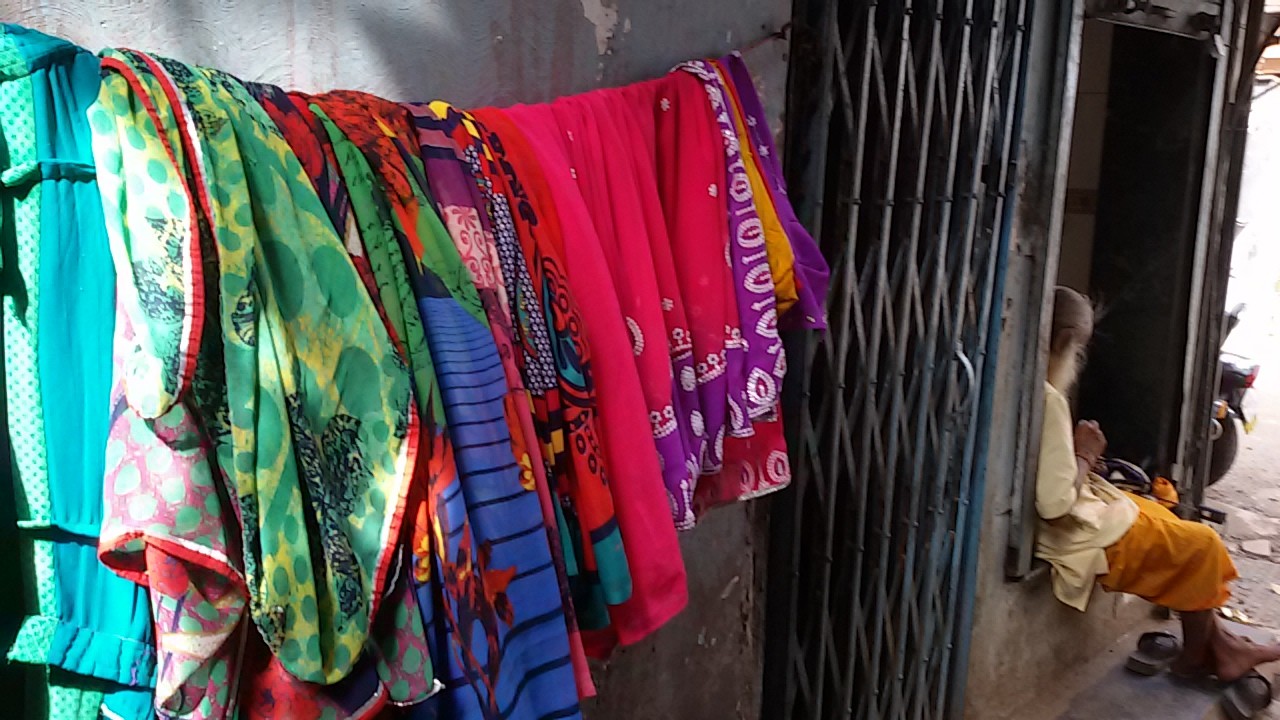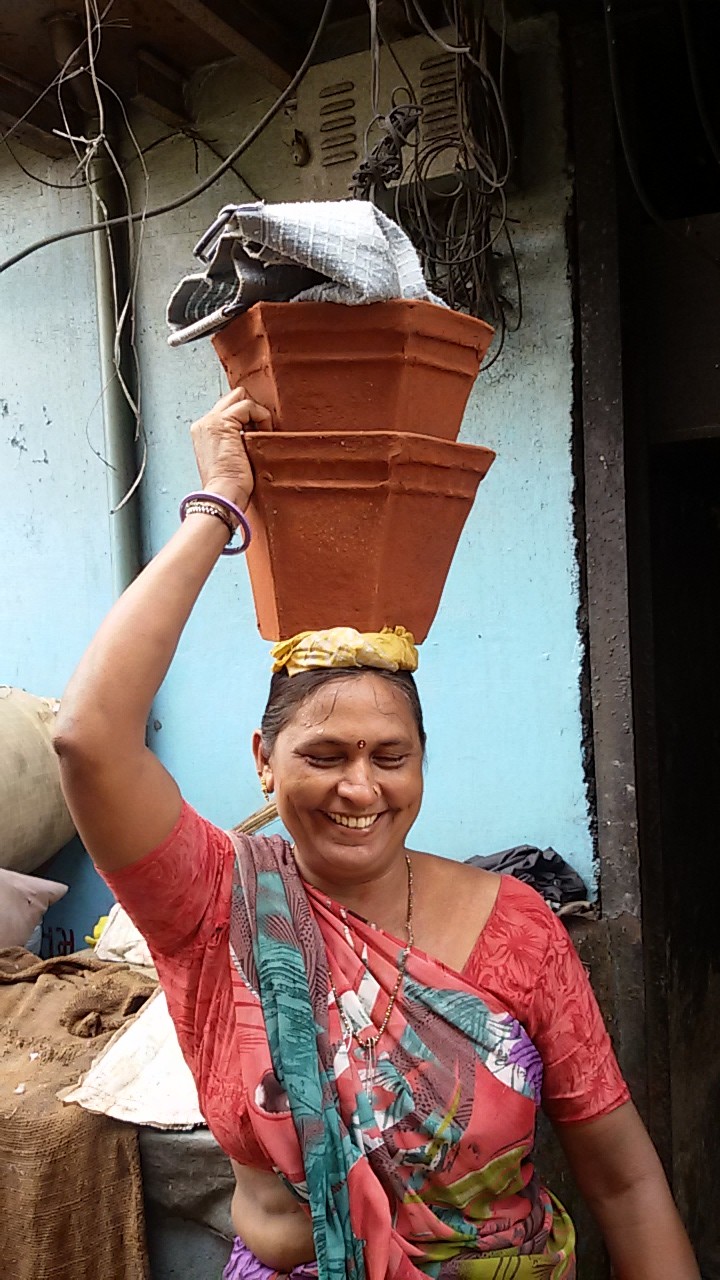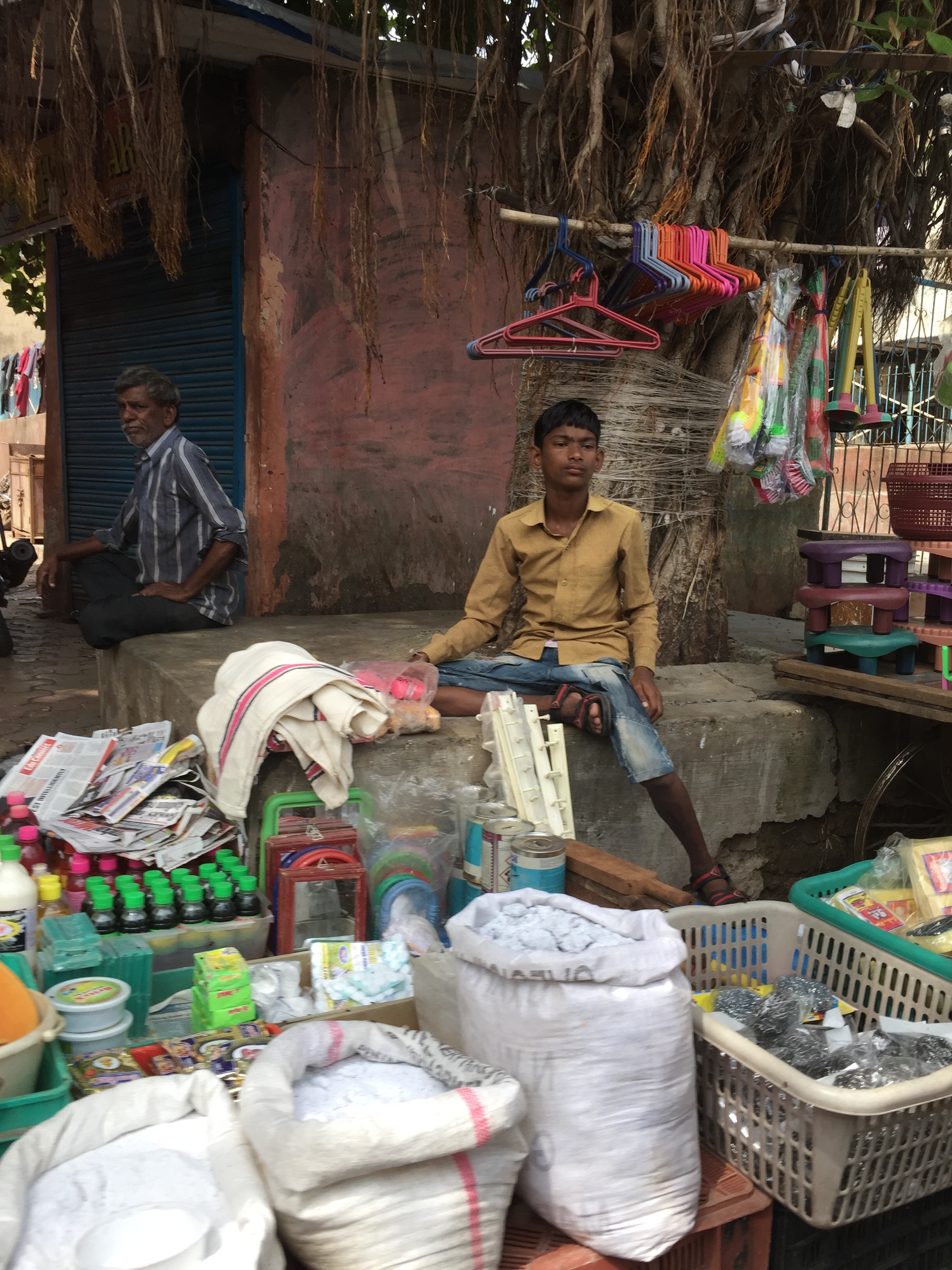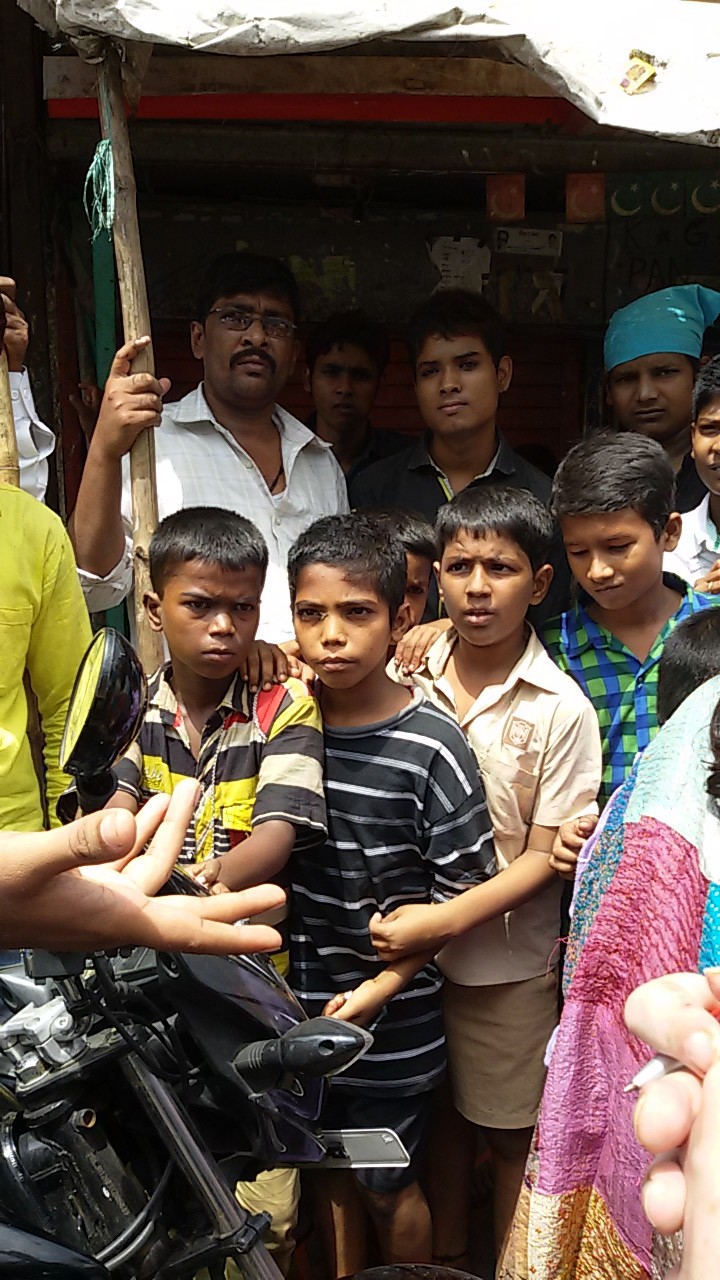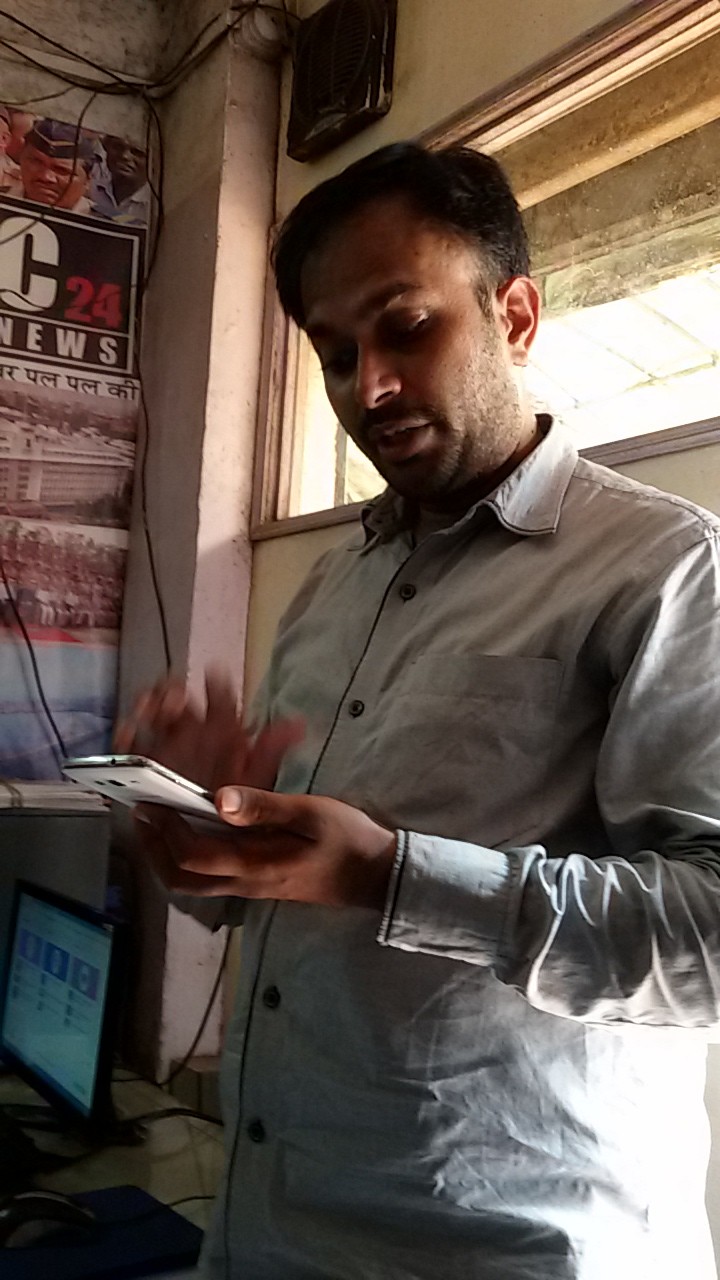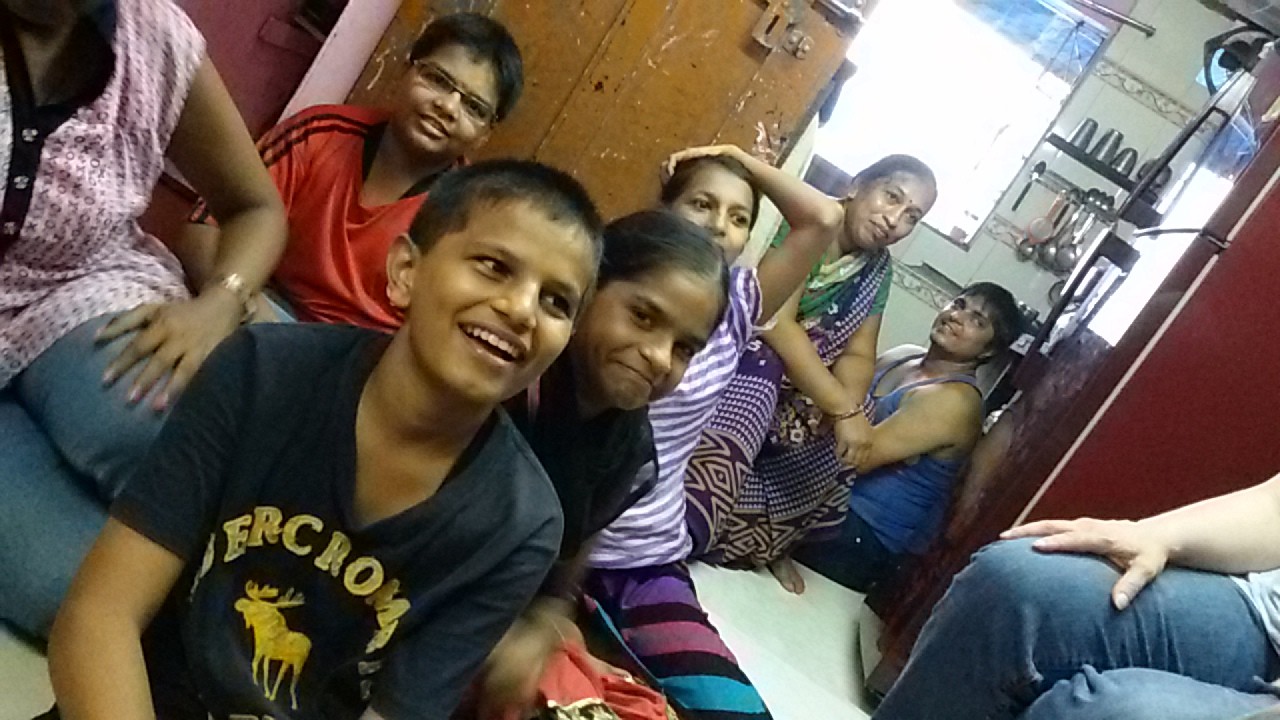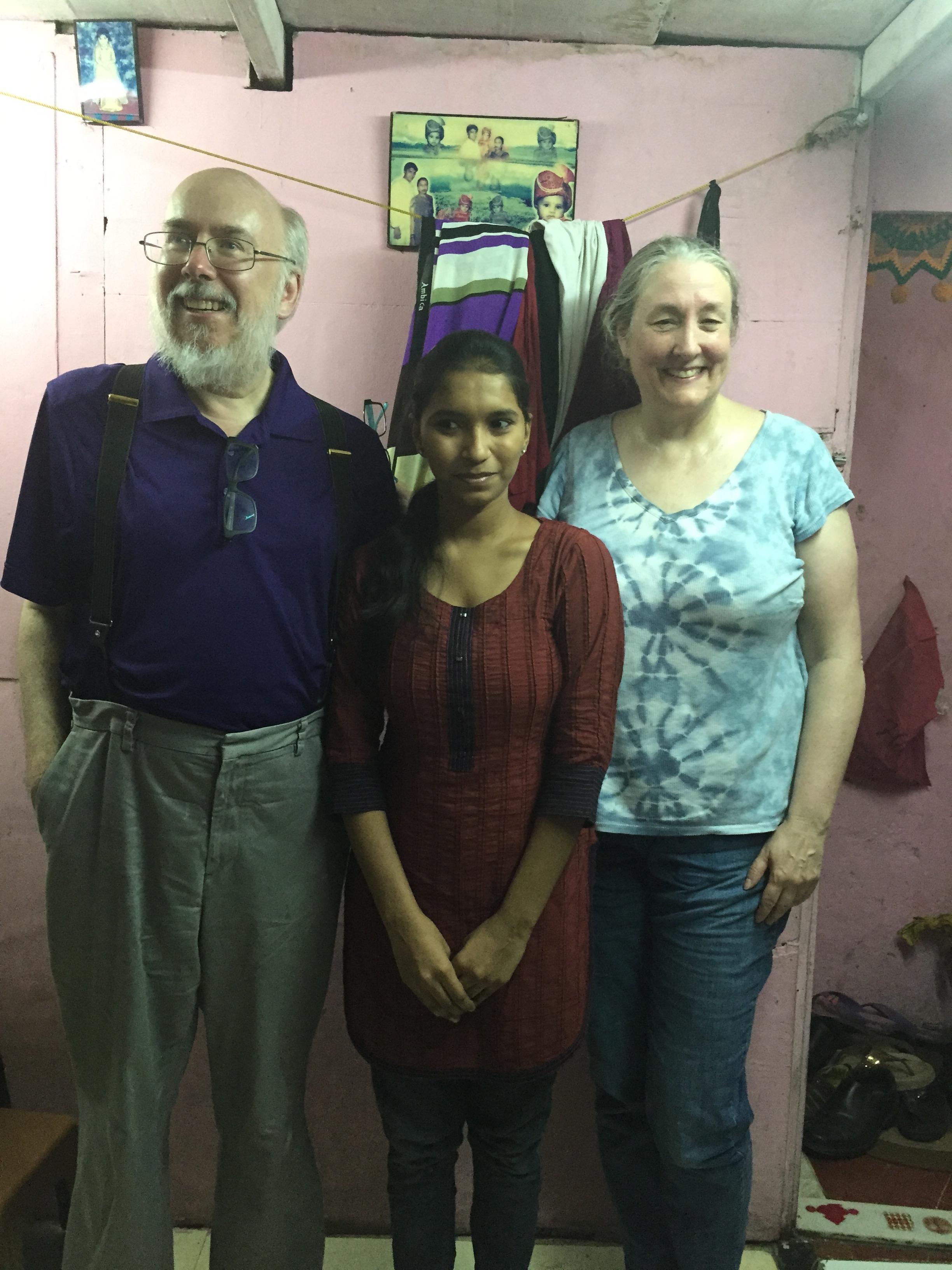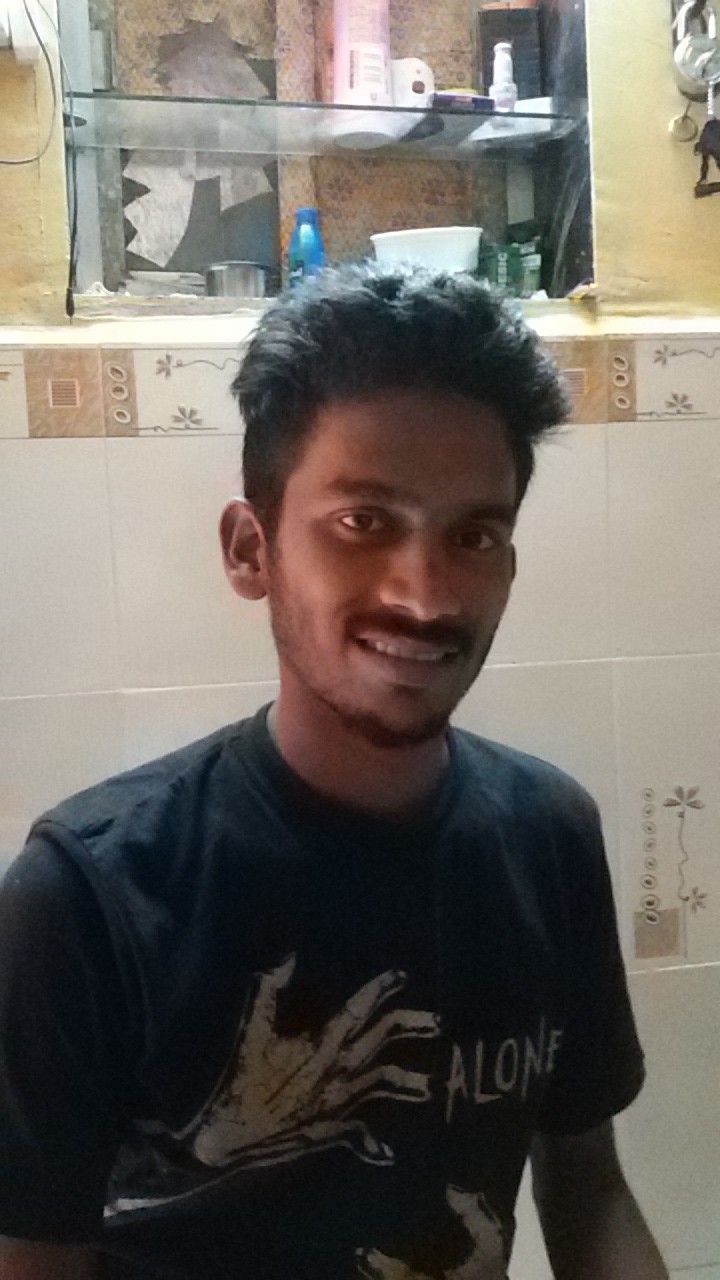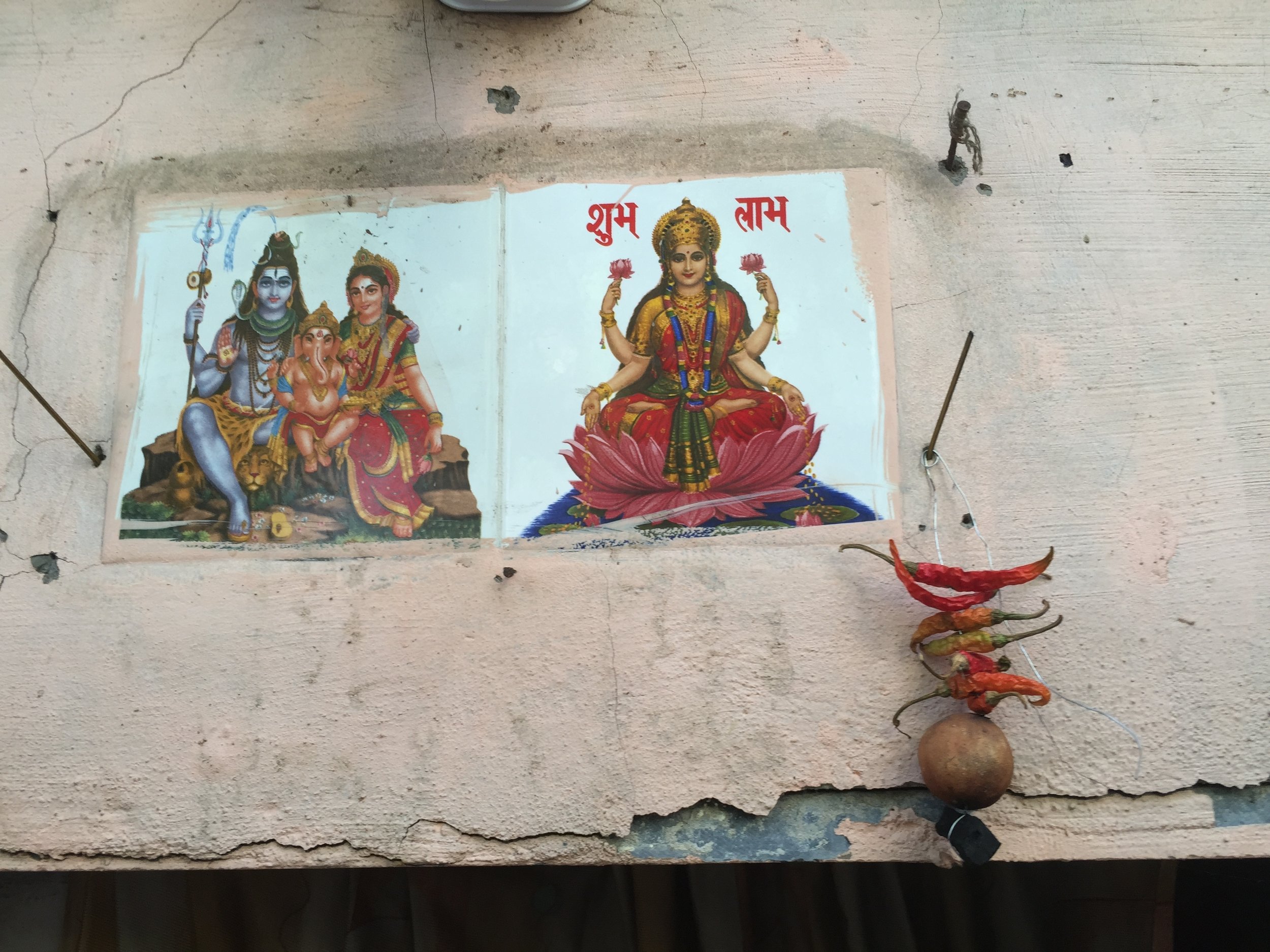Digital Culture in Dharavi
/One of the many fascinating people that Parmesh Shahani, our host from the Godrej India Culture Lab, introduced to us was Dina Mehta, who is a trained ethnographer who works for corporate clients here in India and around the world. In the course of conversation, she asked whether we would like to visit one of India's slums. There has been a rise in slum tourism in the wake of Slumdog Millionaire, which interests me very little, but she and her team of ethnographers maintain ongoing relationships in this community, and she offers to set up some interviews for us so we can develop a better understanding of how people live there and especially how they relate to media, old and new. The photographs used here are a mixture of those taken by Cynthia Jenkins and by Shubhangi Athalye, a member of Mehta's team. What follows are my field notes from my experiences that day. Today, we met Dena Mehta at her apartment, since she was taking us out into the field to do some ethnographic work in Dharavi, which she describes as Asia’s biggest slum. Along the way, Dena points out to us the Chawls, which are old tentament structures which were established in the mid-century to house workers at the local textile mills. Each of the buildings are 4-5 stories tall and have 10-20 apartments per floor: each apartment is one room for sleeping and then shared public areas and bathrooms. The Chawls are the focus of some nostalgia here as they have come to stand for a particular communal lifestyle, but they are vanishing rapidly as gentrification hits these areas (see my earlier discussion of the ways that the Mills are being repurposed for corporate office space, etc.)
We are met on the outskirts of the slum by an elected representative from the Bharatiya Janata Party (BJP) , which is currently the ruling party of India and is known to be very right-wing, Hindu nationalists, but also deeply rooted in the poorest urban areas of the country. Narendra Modi, India's current head of state, came from this party and he rose to power in part on the basis of his promise to bring more toilets to India, which John Oliver did some comic riffs on, but having visited here, it is no joke. Sanitation is one of the biggest challenges facing this community. Individual quarters do not have toilets; people tend to go to public facilities to wash or do other things, which can be some blocks away from where they live, and are massively crowded. They may also go in buckets which get dumped, along with the trash, in the open sewer which runs along the outskirts. The streets of Mumbai are densely populated and chaotic, but that was just a dress rehearsal for what we encountered here.
We are told that something like 1.2 million people live in this tightly packed area of the city, many of them stacked on top of each other, and that this area has become a kind of refuge camp for migrants from other regions, with the result that they are dealing with enormous cultural and linguistic diversity. Even to our still uninformed eyes, it is not hard to spot real differences in dress and speech. As we are arriving, a group of Muslim men are kneeling on blankets beside the road as they begin their prayer, and we hear the sounds of the prayer in the background for much of our first round of conversations here. We pass many women wearing Burkas. But we also encounter brightly dressed women in Saris passing alongside them in the streets.
The area is a maze of narrow, winding streets, and we walk along one of them to discover a colony of potters, whose family have been making clay pots for generations.
The women are sitting on the ground, slapping and pounding the clay and starting to shape it. A few buildings down we see the clay pots sitting in coals as a kind of kiln.
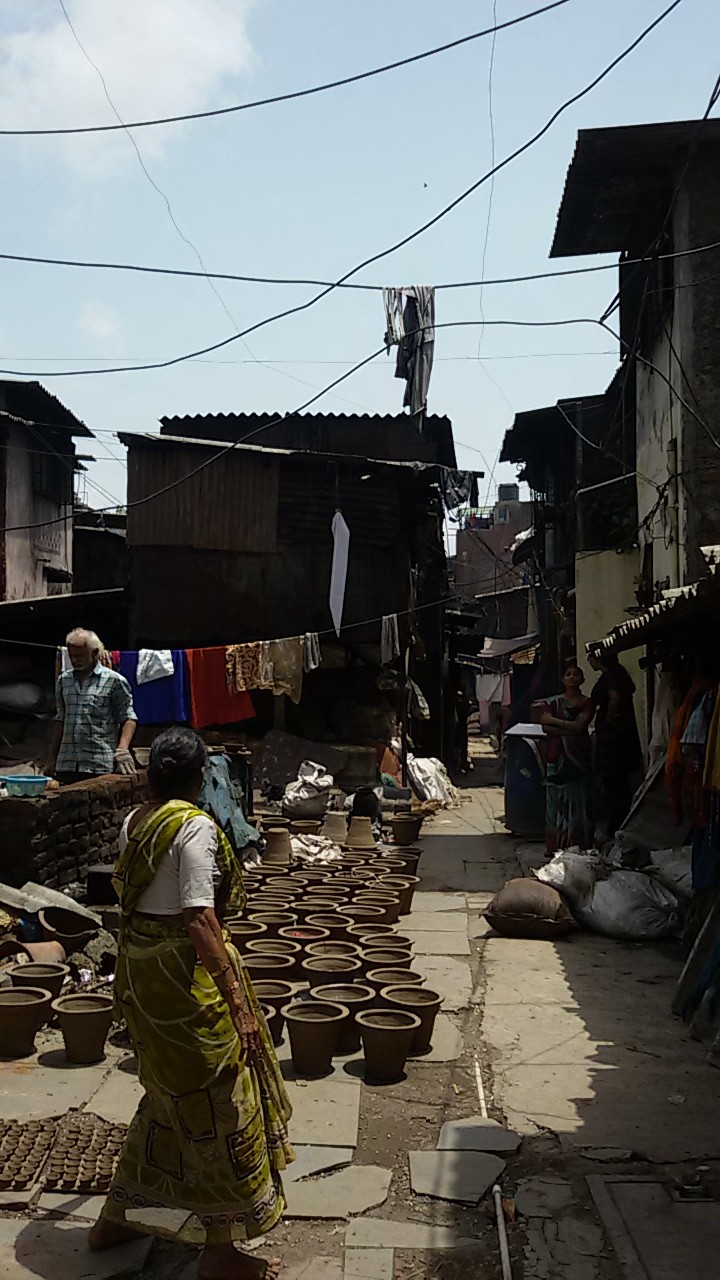 We spoke with one local family inside their home, and learn that they have been able to gradually improve their quality of life thanks to loans from a local support system: different groups, based on their unions, their religions, and their ethnicity pool money for mutual support and they are able to take out low interest loans. The political leader also tells us that families can get government loans but that this program is still not very well understood.
We spoke with one local family inside their home, and learn that they have been able to gradually improve their quality of life thanks to loans from a local support system: different groups, based on their unions, their religions, and their ethnicity pool money for mutual support and they are able to take out low interest loans. The political leader also tells us that families can get government loans but that this program is still not very well understood.
These large Indian families live in households which on average are 180 square feet, though the politician claims that their goal is to increase this to 279 feet in the coming few years. These homes, as we observed, mostly consist of an entry area, a sitting room where people work by day and all of the family members sleep at night, and sometimes, a separate kitchen. In some cases, the space is split between a shop downstairs and a living quarters upstairs, which is reached by climbing up a rather steep ladder. We were able to visit in three different homes during the day – in each, the furnishing are sparse, with people sleeping on mats on the floor, and perhaps a few seats, but all of the homes we visited had television sets. We were told that their daily life is structured, in part, around water: water runs through the pipes from 4-7 A.M., which is when they do their housework and also store water for the rest of the day in jugs or bottles for further use.
As we walk down the street, it is clear that most of these people are involved in either some form of craft or are shopkeepers. There are many stalls along the way selling fresh fruits and veggies. We are also told that much of the illicit goods that circulate in Bombay come from this area – including bootleg copies of dvds and CDs, but also, for example, knock-off Gucci bags, but even knockoff versions of simple household items, for example Life Buoy soap or brand name crackers.
The politician works the neighborhood like an old Ward politico in the states: he stops along the way to talk to his constituents by name, and they all seem to know him. He has a degree in Print-Making from an arts school, but his child was born with Autistic and so he went back to learn special education and now works part of each day at the local schools. But he spends 4-5 hours a day walking through the neighborhood to resolve disputes and help connect people to government services. We are told that he is also involved with RSS which he described as an organization which “looks after our Indian culture,” but which others described to us as borderline fascist. He told us that the police simply can not handle all of the problems of this area so they have created a diverse counsel of senior citizens who are called upon to work through conflicts on a local level and not involve the cops unless it is totally necessary. As we are talking standing on a street corner, I am watching over his shoulder as more and more people start to gather around us, some staring openly, some coyly trying to pay attention to something else, many glaring at us, and all trying to figure out why this white guy is taking so many notes. Just as I am afraid we are about to get completely mobbed, there are horns blaring, and the politician realizes we are blocking the street and we move along.
As we are standing there, a Muslim man, Shaikh Fakhrul Islam, approaches us.
He is a local doctor and social worker but more interestingly, he is a journalist who runs a news organization, C24 news. The group engages citizen journalists all over the ghetto who send him photographs and reports via What’sAPP, which is a kind of social media platform.
He and a few other writers consolidate the information into news reports which go out over their website and their Facebook page. He is able to use the site to advocate on behalf of his community. He specifically mentioned that he has women come to him and say “I can not fight my own battle. Will you help me fight my battle,” and he stands up against domestic abuse and rape culture in this community. He also has been able to focus attention on local problems and get faster government response – for example, flooding caused by the monsoon. As we leave, he turns to us and says “remember me in your prayers.” The politician takes a more skeptical view of the whole operation. He believes that the doctor is a decent fellow and well meaning, but he wonders where the money is coming from to support the operation and what interests he may be serving.
We travel to another section of this community and are met by Adrana, an adolescent girl, who is wearing what seems to be clearly her very best dress, her younger cousin also in a festive dress tagging along behind her, and she shows us the way back to her family home. We climb a rather steep ladder up to their living quarters, and find her mother and father, a sister-in-law and her husband, another girl, and two more boys waiting for us, (adding to the five members of our ethnographic expedition) in what is a one room home.
The father is a tailor and he has shoved his sewing machine into the corner to make room for the guests. We focus our attention on Adrana, who has agreed to the interview, but we end up engaging with the whole family, including the younger sibling, who periodically ask us such questions as “What gods do you worship?” or “What is in America?” and we do our best to answer. From the shrine in the corner, this is clearly a Hindi home. Adrana is in 12th Grade and goes to a local commerce college; she was accepted into a credit-bearing educational institution based on her test scores but her family could not afford to send her to a college which charged for tuition. She is studying economics and she tells us she hopes to go on and get a PhD and then become the CEO of a company. Everything she tells us places a strong emphasis on her studies, and it is clear she is smart and ambitious.
Much of this and the other interviews are in local languages, which Dena’s team is helping to translate for us but every so often she breaks out into English. My thought was that she wanted us to know she could speak the language and she does so beautifully: she said that she is taught in English but that her friends and family do not speak it outside the classroom. Dena later suggested that she spoke in English when she did not want her mother to understand what she was saying. So, for example, she told us at one point that boys did “bad things” on the net but girls did not, so I asked what “bad things,” and after some evasion, she finally says “blue movies.”
She said she would have preferred to go to the Credit-bearing school, because they did not require her to dress in traditional Indian clothes, and she would prefer to dress in western clothes, such as jeans or shorts. She gets up, she said, at 5:56 every morning, helps her mother with the housework and bathes, then goes to school at around 7 and returns around 4 pm. We had learned from the politico earlier that the local schools run on shifts because they cannot seat all of the students from this community at the same time. She says with some pride that she is becoming a good cook just like her mother.
We talked a lot about her media consumption. She points with pride to the flat screen television on the wall, but also says that the set is brand-new, replacing one that gave out a year or so back: it still has packaging around it that lists its price, etc. Asked about what she watched on television, she identified only Hindi-language Indian-made shows, most of them dramas about high school and college life. Her younger brother announced that he especially liked WWE wrestling. When asked what movies she likes, she again identifies Hindi stars and films, with a strong emphasis on those which involve dance. She specifically mentioned wanting to see Disney’s Any Body Can Dance 2 (or ABCD as it is called). She said that she liked to do Bollywood dance but they could not afford lessons, so she practiced along to the music videos she saw on television.
She has internet access primarily at her Uncle’s house, who lives nearby and is an accountant, so he needs to have a computer at home. For the most part, she accesses the web through her mobile phone, which she about a year and received for her birthday from her father. She says she uses it to access Facebook: “All my friends use Facebook so she needs to use it.” She also likes to download images of actors and actresses, which she uses as her profile picture, since she is told that it would be dangerous for her as a young woman to publish her picture on the web. She also likes to collect quotes, words of inspiration and wisdom from famous people, which she exchanges with her friends and uses to model her life.
She also uses her phone to download songs and exchange them via Bluetooth with her friends. Dena told us that they pass the phones around with all of the members of the family so there is essentially no privacy about what they download, and she mentioned gathering around the computer at her Uncle’s house with four or five other female relatives, all working on Facebook at once. When asked what she looks up, she used as an example “who invented the selfie stick” and said she was especially interested in science facts and discoveries.
I tried to get a sense of her model of the civic by asking how she would deal with a problem in her community. She said first she would bring the problem to her mother and father, to her high school friends or to the tutor she works with (who seems to play an important mentor role on all aspects of her life). At school, if you brought a problem to the principal, they would yell at the students and then fix the problem. In the neighborhood, she would rely on the council of elders or if needed, a local representative like our initial guide. She also described how her circle of friends, from different backgrounds in the community, worked together to insure they all did well in school, helping weaker students, learning from stronger students.
She seemed very interested in the fact that I am author and wanted to know if I was going to write about her in one of my books: she loves to read and it turns out that she mostly likes one writer who does thick stories about college life in India. She asks for my autograph and wants to take her picture with me, and she follows us down the street as we leave, still asking us about America.
We drove to another location, past some Quonset Huts which had been left here by the British during World War II. They are semi-circular buildings with corregated metal roofs (or in some cases, now, with blue plastic tarps stretched over gaping holes in the roof).
We walked past a group of young men gathered around a game board and we were told that they were playing Carrom. It is played on a flat game board with pockets on the four corners. It is something close to pool except that it is played with flat game pieces of varied sizes which you slide across the board. So at the start, the smaller pieces are all on the center, and the goal is to use the bigger pieces to push them into the pockets. The game seemed to involved 5-6 players, though I could not tell how many of these were just watching and waiting their turns.
We are here to visit Nitesh, a young man 3-4 years older than Adrana. He lives with his father and his elder brother in this house; his elder sister is married and lives elsewhere; his grandparents live in the adjacent house. For several generations, they have lived in this area. He works in an office where he collects and documents checks for local workers. We ask whether he likes to work there, and he says “It’s OK. It’s What I do.” He works 9-6 six days a week with Sundays off and commutes via train which gets him home around 7 pm. Later, we asked him about his aspirations. He wants to own a Royal Enfield motor bike; but for now, he is saving money.
He plans to get married when he has saved enough. He tells us “nowadays everyone is doing love marriages” but his mother comes from the village and she will expect him to accept an arranged marriage and “I will need to listen to her.” We ask what he wants to do in the future and he has no professional goals: “they pay me well and I don’t want to leave. “ So, he imagines working in this job for as long as they will have him, but he does acknowledge the job is “Pakau” which is slang for boring. He says he would like to marry a woman who has a job: men used to resent working women, but now they need the extra income.
We ask him about his engagement with media and he shows us his phone, which he uses to maintain contact with his friend and help organize local cultural festivals (his role in the local community) but also to download music and engage in social media. He has little interest in Facebook but prefers What’s Up, which allows him to participate in groups. As he listed what kind, he mentions sharing “non-veg” content with his friends, and it turns out he is referring to a group called “All About Sex.” Asked what kinds of videos he likes, he says he likes to warch videos of people playing Carroom or Cricket; he’s a big sports fan and also cites games on television among his favorite and, oh yes, the WWE. Asked about Indian wrestlers in the WWE, he says “nice to see our people but they do not perform as well as the American wrestlers.” He said the WWE performances have inspired him to go to the local gym and work out.
Asked if he had ever produced video, he mentions a project he did with his friends when a boy their age died of malaria: a tribute video which set a series of dissolves of photographs with the boy and his friends to a somber pop song, and he shows us the video on his phone.
On television, he likes sports and dance competition reality series. He says his mother likes to watch serials, but he doesn’t even know their names, even though he is in the same room as she views them. He doesn’t watch Bollywood songs on the web but downloads clips directly onto his phone and trades them with his friends. He specifically mentions liking the songs from the ABCD movies, but he deletes songs when he gets bored and nothing stays on his phone for long. He says that the people he knows who own computers are educated: they acquire these skills by working in offices – typists, for example – and they end up doing projects more because they want to improve their skills than because they want to express themselves.
Asked about how he would deal with problems, he mentioned again the elders committees which arbitrates disputes. When they need action, they pick up the phone and call local officials, who they all know personally. He said they respond more quickly when more people call so they go around beginning friends to call in reports about problems. He would not use social media because it is less direct than calling the officials directly on his mobile phone.
I mentioned that he helps to organize local festivals, and he mentioned two festivals in particular. The first is the festival of Ganesh, which is coming up soon. The other night we saw inside a warehouse as we were driving by: it was full of giant statues of the elephant-faced helper god, Ganesh, which looked to be made of paper mache. In this festivals, people all over the city take these statues into their homes, feed and care for them, and then they bring them to sea and watch them float away.
He also talked about the Festival of Krishna. Krishna was said to have an appetite for butter so his mother would put the butter put high up in the trees to keep it away from his reach. During the festival, they hang pots with candy and coins in very high places and festival goers form human pyramids, sometimes 8-9 bodies high, to get the pot down.
As we are leaving, I noticed something over the door to his house, next to the tiles depicting Hindu gods. There are several dried peppers, a chunk of lemon, and a block of coal, which I am told are used to keep the “bad eye” away.


